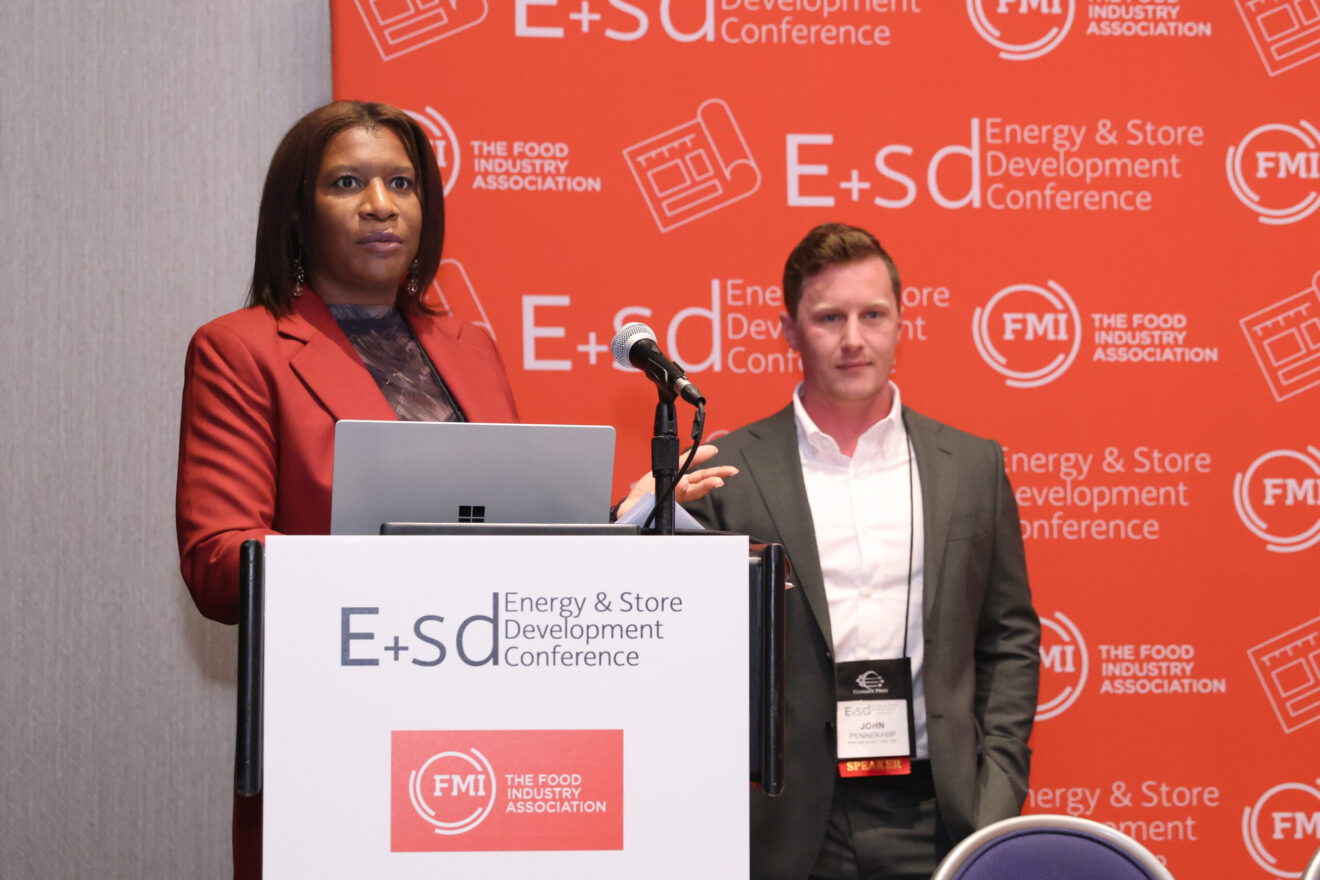Construction of urban grocery stores is on the rise as food retailers look to serve the growing number of city-dwelling consumers.
By 2050, more than two-thirds of the global population is expected to live in urban areas, according to the United Nations.
“There was a slight blip during COVID, where we all tried to move out of the cities for a little bit, but everybody’s moving back,” John Pennekamp, an associate at BRR Architecture, said during a session at FMI — The Food Industry Association’s recent Energy & Store Development Conference in Baltimore.
“With that in mind, as a grocery operator, more of your clients are going to be in this area. So building urban grocery stores allows you to more efficiently service them,” Pennekamp said. “The other spike that we saw during the pandemic was grocery pickup and online order fulfillment. And building urban grocery stores allows you to place your product closer to these customers, thereby making your delivery more efficient.”
While urban populations may be on the rise again, Pennekamp noted that office space closures resulting from the transition to remote and hybrid work have led to a lot of available space in the urban landscape that can be converted to grocery retail.
Pennekamp and Jeanine Wilson, project executive at construction management firm CM&B, shared insights from two such projects in New York City that transformed a former Wall Street bank building and a Madison Avenue office building into Whole Foods Market locations.
Planning is key
With urban stores that are being added to existing buildings, site visits are essential before the design or construction can begin, Pennekamp said. Older buildings may have been remodeled many times, so seeing the site in person to make sure the new store design works with the actual layout can prevent architects from having to go back to the drawing board.
For both the Wall Street and Madison Avenue Whole Foods projects, CM&B used building information modeling technology to create 3D models of the spaces that could be overlaid with models of the contractors’ plans.
Even with careful planning, space constraints make urban projects complicated when it comes to construction. Typical suburban supermarkets, which Pennekamp refers to as “box-in-a-lot” builds, have ample space for construction crews and materials storage, and larger footprints that allow for wide aisles and easy access to HVAC systems and other equipment. In urban builds, however, space is at a premium.
“One of the big differences between building in a suburban setting versus urban is the space that you have the store material,” said Wilson.
“In a suburban setting, you probably have a footprint to bring in materials, store them on-site, or even have a trailer outside for materials. An urban setting is very different. You must choreograph the deliveries to make sure that what you’re bringing on site can be installed shortly thereafter, otherwise, you’re going to disrupt the flow of work on site.”
Find creative solutions for small spaces
Urban stores often require creative problem-solving when it comes to fitting in all of the ductwork, wiring and machinery that supermarkets require. Since roof access is unlikely for most stores located on the ground floor of a multi-tenant building, housing HVAC units and other machinery in recessed areas in the ceiling can be a solution, Pennekamp and Wilson said. They advised that access points for maintenance personnel should be factored into these plans, and can include catwalks, hatches or space to bring in a ladder or electric lift.
Suburban supermarkets often have 20-ft. ceilings that can easily accommodate pipes and wiring, but city stores often have half as much vertical space. “The big takeaway here is that coordinating with your engineers is very, very important to make sure that you’re running the utilities through the corridors to the back of house,” Pennekamp said, noting that any additional loss of vertical space will cut down on shelf space and the amount of product on the sales floor.
Let the location guide the design
Leaning into the “urban aesthetic vibe” can help urban grocery stores have a more intentional feel and “make it look like a cool industrial space,” Pennekamp said. Working with the engineering team to make sure exposed pipes look clean and that signage is properly lit can offset the effects of open ceilings or lack of natural light.
City stores can also draw inspiration from a building’s history and incorporate elements from the original design into the look and feel of the store. For the Wall Street Whole Foods project, the design team incorporated some of the original art deco design elements from the former bank building, including ornate gold elevator panels.
“The elevator was not salvageable, but we did salvage the panels and put those on the wall. And then they brought in a lot of art deco branding…and tied it into the space,” Pennkamp said. “So it’s kind of cool to be able to give homage to the history of the building itself in the design.”
Recent related stories:
- Building the refrigeration technician workforce of tomorrow
- FMI’s pitch competition propels technology in the grocery industry
- FMI leader lays out 6 imperatives facing the food industry today
_____________________________________
If you liked this article, sign up to receive one of SmartBrief’s Food & Beverage newsletters. They are among SmartBrief’s more than 250 industry-focused newsletters.
